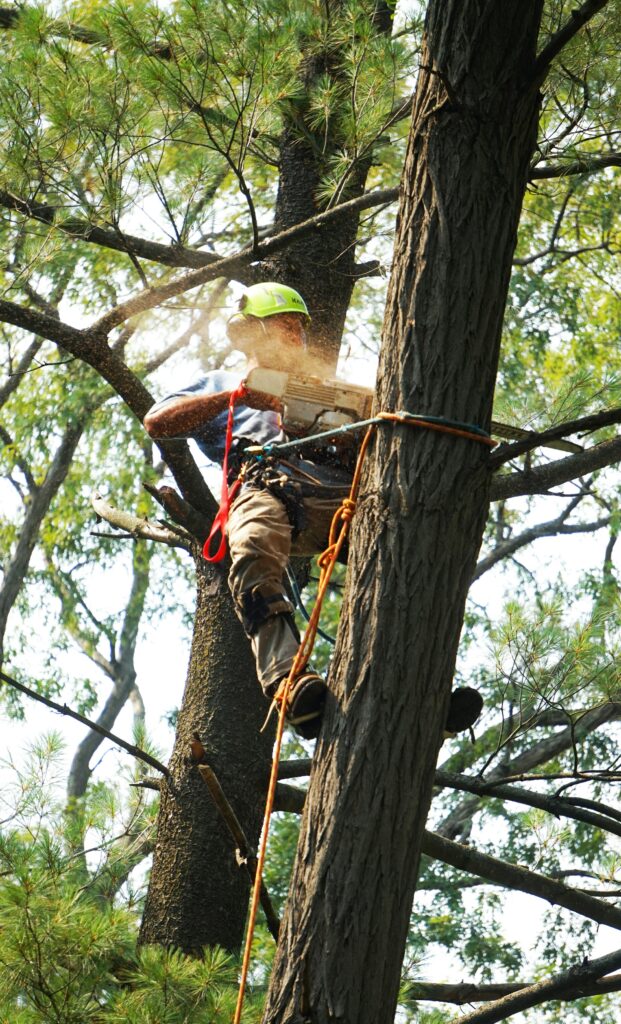Trees are not just beautiful additions to our landscapes; they are vital contributors to the health of our environment. Beyond providing shade and enhancing the aesthetic appeal of our surroundings, trees offer a plethora of environmental benefits that are essential for sustaining life on Earth. However, to maximize these benefits, quality tree care practices are crucial. In this article, we will explore the numerous environmental benefits of trees and delve into how proper tree care plays a pivotal role in optimizing these benefits.

Carbon Sequestration
Trees act as natural carbon sinks, absorbing carbon dioxide from the atmosphere during photosynthesis and storing it in their biomass. This process helps mitigate the effects of climate change by reducing the concentration of greenhouse gases in the atmosphere. Quality tree care, including regular pruning, watering, and fertilization, promotes healthy tree growth, thereby enhancing their capacity for carbon sequestration.
Air Quality Improvement
Trees play a crucial role in improving air quality by absorbing harmful pollutants such as ozone, sulfur dioxide, and nitrogen oxides through their leaves and bark. Proper tree care practices, such as removing dead or diseased branches and managing pests, help trees maintain optimal health and maximize their air-purifying capabilities. Additionally, planting and maintaining trees in urban areas can help combat the effects of air pollution and improve overall public health.
Biodiversity Conservation
Forests and wooded areas provide habitat and food sources for a diverse range of plant and animal species. Quality tree care practices, such as selective pruning and habitat preservation, contribute to the preservation of biodiversity by maintaining healthy ecosystems. Furthermore, planting native tree species and avoiding the use of harmful pesticides promote the well-being of local wildlife and support ecological balance.
Soil Conservation
The roots of trees play a crucial role in stabilizing soil and preventing erosion. By anchoring soil particles and absorbing excess water, trees help mitigate the impacts of heavy rainfall and prevent soil erosion. Quality tree care practices, such as mulching and proper watering techniques, support soil conservation efforts by promoting healthy root development and minimizing soil disturbance.
Temperature Regulation
Trees provide natural cooling through the process of evapotranspiration, where water evaporates from their leaves, thereby reducing ambient temperatures in their vicinity. Proper tree care, including regular watering and pruning to maintain canopy density, enhances this cooling effect, particularly in urban areas where the urban heat island effect can lead to elevated temperatures.
Water Management
Trees play a crucial role in regulating the water cycle by intercepting rainfall, reducing runoff, and replenishing groundwater supplies. Quality tree care practices, such as proper irrigation management and tree selection based on local water availability, help optimize water use efficiency and minimize water waste. Additionally, preserving riparian zones and planting trees along water bodies can help protect water quality and aquatic habitats.
Noise Reduction
Trees serve as natural barriers that absorb and deflect sound waves, reducing noise pollution from sources such as traffic, construction, and industrial activities. Proper tree care practices, such as planting dense vegetation and maintaining healthy tree canopies, contribute to effective noise reduction in urban and suburban environments, thereby enhancing the quality of life for residents.
In conclusion, trees provide invaluable environmental benefits that are essential for sustaining life on Earth. From carbon sequestration and air quality improvement to biodiversity conservation and soil stabilization, the contributions of trees to our environment are vast and multifaceted. However, to maximize these benefits, quality tree care practices are essential. By adopting proper tree care techniques and promoting tree conservation efforts, we can harness the full potential of trees as nature’s allies in combating environmental challenges and building a healthier, more sustainable planet.